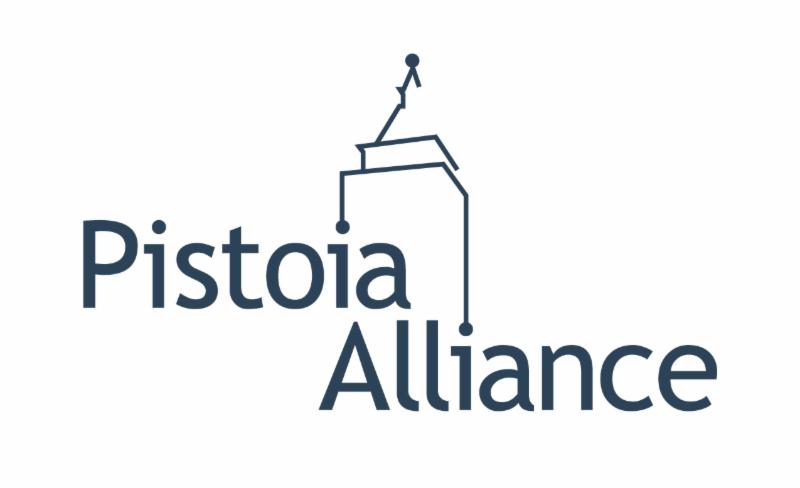 The Pistoia Alliance, a global, not for profit alliance that works to lower barriers to innovation in life sciences R&D, is calling upon the industry to improve collaborative efforts to use patient data to its full effect. In a series of keynote speeches delivered at The Pistoia Alliance’s annual member conference in London, speakers from Amgen, Accenture and AstraZeneca, discussed the need to more closely connect outcomes data with the R&D process – to help pharmaceutical companies focus their research efforts and deliver real benefits to patients. Building machine learning and deep learning systems, and incorporating data from therapeutic interventions or diagnostics into R&D is technologically challenging, and would benefit significantly from industry-wide pre-competitive collaboration...
The Pistoia Alliance, a global, not for profit alliance that works to lower barriers to innovation in life sciences R&D, is calling upon the industry to improve collaborative efforts to use patient data to its full effect. In a series of keynote speeches delivered at The Pistoia Alliance’s annual member conference in London, speakers from Amgen, Accenture and AstraZeneca, discussed the need to more closely connect outcomes data with the R&D process – to help pharmaceutical companies focus their research efforts and deliver real benefits to patients. Building machine learning and deep learning systems, and incorporating data from therapeutic interventions or diagnostics into R&D is technologically challenging, and would benefit significantly from industry-wide pre-competitive collaboration...
interoperability
See the following -
The Number Of Health Information Exchange Efforts Is Declining, Leaving The Viability Of Broad Clinical Data Exchange Uncertain
The diffusion of health information exchange (HIE), in which clinical data are electronically linked to patients in many different care settings, is a top priority for policy makers. To drive HIE, community and state efforts were federally funded to broadly engage providers in exchanging data in ways that improved patient care...
- Login to post comments
The Obama Crony In Charge Of Your Medical Records
 Who is Judy Faulkner? Chances are, you don't know her -- but her politically connected, taxpayer-subsidized electronic medical records company may very well know you. Top Obama donor and billionaire Faulkner is founder and CEO of Epic Systems, which will soon store almost half of all Americans' health information. If the crony odor and the potential for abuse that this "epic" arrangement poses don't chill your bones, you ain't paying attention.
Who is Judy Faulkner? Chances are, you don't know her -- but her politically connected, taxpayer-subsidized electronic medical records company may very well know you. Top Obama donor and billionaire Faulkner is founder and CEO of Epic Systems, which will soon store almost half of all Americans' health information. If the crony odor and the potential for abuse that this "epic" arrangement poses don't chill your bones, you ain't paying attention.
- Login to post comments
The ONC 10 Year Vision
On June 5th 2014, ONC released “Connecting Health and Care for the Nation: a 10-Year Vision to Achieve an Interoperable Health IT Infrastructure." The plan is divided in 3 year goals, 6 year goals, and 10 year goals. Five specific tactics support the strategies. Below is a summary of the report and a few comments from my Massachusetts experience that support the reasonableness of the ONC goals.
- Login to post comments
The OpenID Foundation Launches The OpenID Connect Standard
The OpenID Foundation announced today that its membership has ratified the OpenID Connect standard. Organizations and businesses can now use OpenID Connect to develop secure, flexible, and interoperable identity Internet ecosystems so that digital identities can be easily used across websites and applications via any computing or mobile device. Read More »
- Login to post comments
The Pathway to Patient Data Ownership and Better Health
Digital health data are rapidly expanding to include patient-reported outcomes, patient-generated health data, and social determinants of health. Measurements collected in clinical settings are being supplemented by data collected in daily life, such as data derived from wearable sensors and smartphone apps, and access to other data, such as genomic data, is rapidly increasing. One projection suggests that a billion individuals will have their whole genome sequenced in the next several years. These additional sources of data, whether patient-generated, genomic, or other, are critical for a comprehensive picture of an individual’s health...
- Login to post comments
The Pentagon Contract That Could Shape EHRs For Years To Come — Epic Pays Out To Win Friends And Influence Congress
GENTLEMEN (AND WOMEN) START YOUR (INTEROPERABLE) ENGINES: The Department of Defense’s $11 billion, 10-year contract for a new electronic health records system won’t just shape military health for the next decade, reports Ashley Gold, it could very well predict the future of electronic health records and their handling of interoperability. Read More »
- Login to post comments
The Pistoia Alliance Calls on the Life Sciences to Support Greater Collaboration to Overcome Technology Challenges
- Login to post comments
The Politics of the EHR: Why we’re not where we want to be and what we need to do to get there
 By now, it seems abundantly clear that the vast potential offered by universal adoption of electronic health records (EHR) has not been achieved. Indeed, the fulfillment of that potential seems a long way off. Unsolved problems with interoperability, usability, safety, and security, to name a few, remain, and continue to pose barriers to universal adoption. There is ample evidence in the medical literature, of the unsolved problems of the EHR. Indeed, two recent reports that offer (probably inadequate) solutions highlight the difficulties that exist with the EHR. The proliferation of these problems has only increased with the increase in adoption of the EHR by physicians and institutions. The Texas Medical Association has asked the (at the time) ONC, Farhad Mostashari, MD, to establish a health IT patient safety czar.1 Read More »
By now, it seems abundantly clear that the vast potential offered by universal adoption of electronic health records (EHR) has not been achieved. Indeed, the fulfillment of that potential seems a long way off. Unsolved problems with interoperability, usability, safety, and security, to name a few, remain, and continue to pose barriers to universal adoption. There is ample evidence in the medical literature, of the unsolved problems of the EHR. Indeed, two recent reports that offer (probably inadequate) solutions highlight the difficulties that exist with the EHR. The proliferation of these problems has only increased with the increase in adoption of the EHR by physicians and institutions. The Texas Medical Association has asked the (at the time) ONC, Farhad Mostashari, MD, to establish a health IT patient safety czar.1 Read More »
- Login to post comments
The Real Story About COTS for the VA
There has been a tremendous amount of news coverage of recent congressional hearings about the need for the Department of Veterans Affairs to replace its existing electronic health record technology. What's even more remarkable is how one-sided the discussions and the reporting have been. For anyone without a background in healthcare IT, it would seem like a slam dunk that moving to a commercial off the shelf electronic health record solution is the best way forward for the VA...
- Login to post comments
The State Of HIE As 2012 Comes To A Close
Although medical professionals may have been using the phrase "health information exchange" for centuries, the health information sharing organizational arrangement used today was first mentioned in the popular media by the Canadian Press in 1977, according to Google's archives, when Canadian health officials agreed to set up an inter-provincial HIE for studying coronary bypass surgeries and occupational health trends. Read More »
- Login to post comments
The Technology Is in Place – It’s People and Practical Implementation That Will Enable Change Outlined by Dame Fiona Caldicott and CQC
 In response to the recommendations by the CQC and Dame Fiona Caldicott, Jacinta Ni Suaird, Product Director at IMS MAXIMS said: “The CQC and Dame Fiona Caldicott recommendations provide welcomed guidance in the use and safeguarding of patient’s data, which can lay the foundations for restoring public trust in this area. The recommendations call for health and care organisations to show greater leadership around data security, with a strong emphasis on providers...
In response to the recommendations by the CQC and Dame Fiona Caldicott, Jacinta Ni Suaird, Product Director at IMS MAXIMS said: “The CQC and Dame Fiona Caldicott recommendations provide welcomed guidance in the use and safeguarding of patient’s data, which can lay the foundations for restoring public trust in this area. The recommendations call for health and care organisations to show greater leadership around data security, with a strong emphasis on providers...
- Login to post comments
The Tragedy Of Roger Baker
Roger Baker's decision to leave the Veterans Affairs Department is, on reflection, a tragedy. Read More »
- Login to post comments
The Truth About The Open Cloud: What Really Matters
There is always a lot of talk about the word "open" in tech circles, especially when it comes to the cloud. After all, no one wants to be locked in and shackled to a "closed" system, right? Read More »
- Login to post comments
The Unfulfilled Promises Of Health Information Technology
[...] Realizing that the cost savings and improvements in healthcare delivery are nowhere near what was optimistically predicted in 2005, RAND recently commissioned a new study to take a fresh new look at the state of health information technology. The new study paints a very different picture... Read More »
- Login to post comments
The US Government’s Digital Strategy: The New Benchmark and Some Lessons
The White House recently launched its new roadmap for digital government. This included the publication of Digital Government: Building a 21st Century Platform to Better Serve the American People (PDF version), the issuing of a Presidential directive and the announcement of White House Innovation Fellows.
- Login to post comments